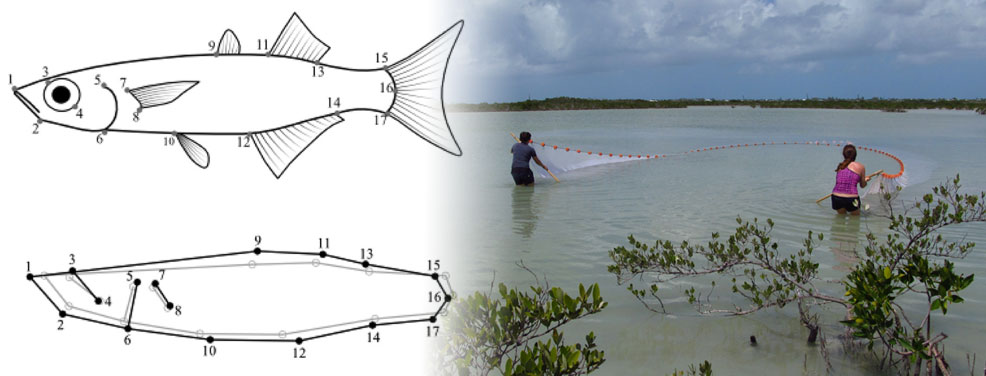What a great collaboration. Check out some of the pictures from the trip below.
[Lab news] Baumann & Therkildsen lab on a silverside road trip
What a great collaboration. Check out some of the pictures from the trip below.
The 282 fish are now split in a DNA sample for extraction and a body sample for further trait measurements.
Click on the link or the image blow to access the article in UConn Today …
…in the true sense has kept biologist’s head scratching for quite some time, and matters have only gotten more complex since the thunderous advent of genetic methods. Yet the distinction between a species and – say – an ecotype of a species is more than just academic quibble.
In the case of the key silverside, Menidia conchorum, a species that is only found in the hypersaline ponds on the Florida Keys, it’s quite literally an existential question. So far, the protocols and steps of protection apply only in cases of threatened species, which is perhaps something that ought to change.
O’Leary et al. went down to the Florida Keys and sampled the silversides in order to compare them morphologically and genetically to the ‘parent’ species, the tidewater silverside Menidia peninsulae. Their findings show that key silversides are distinct, but not quite their own species yet. In addition, the study revealed the large amount of inbreeding and genetic drift that is happening in each of these small hypersaline ponds.
The paper concludes that although ‘only’ an ecotype, the key silverside is threatened by loss of habitat and therefore still needs our protection!

O’Leary, S.J., Martinez, C.M., Baumann, H., Abercrombie, D.L., Poulakis, G.R., Murray, C.H., Feldheim, K.A., Chapman, D.D. (2016)
Population genetics and geometric morphometrics of the Key silverside, Menidia conchorum, a marine fish in a highly fragmented inland habitat.
Bulletin of Marine Science 92:33-50